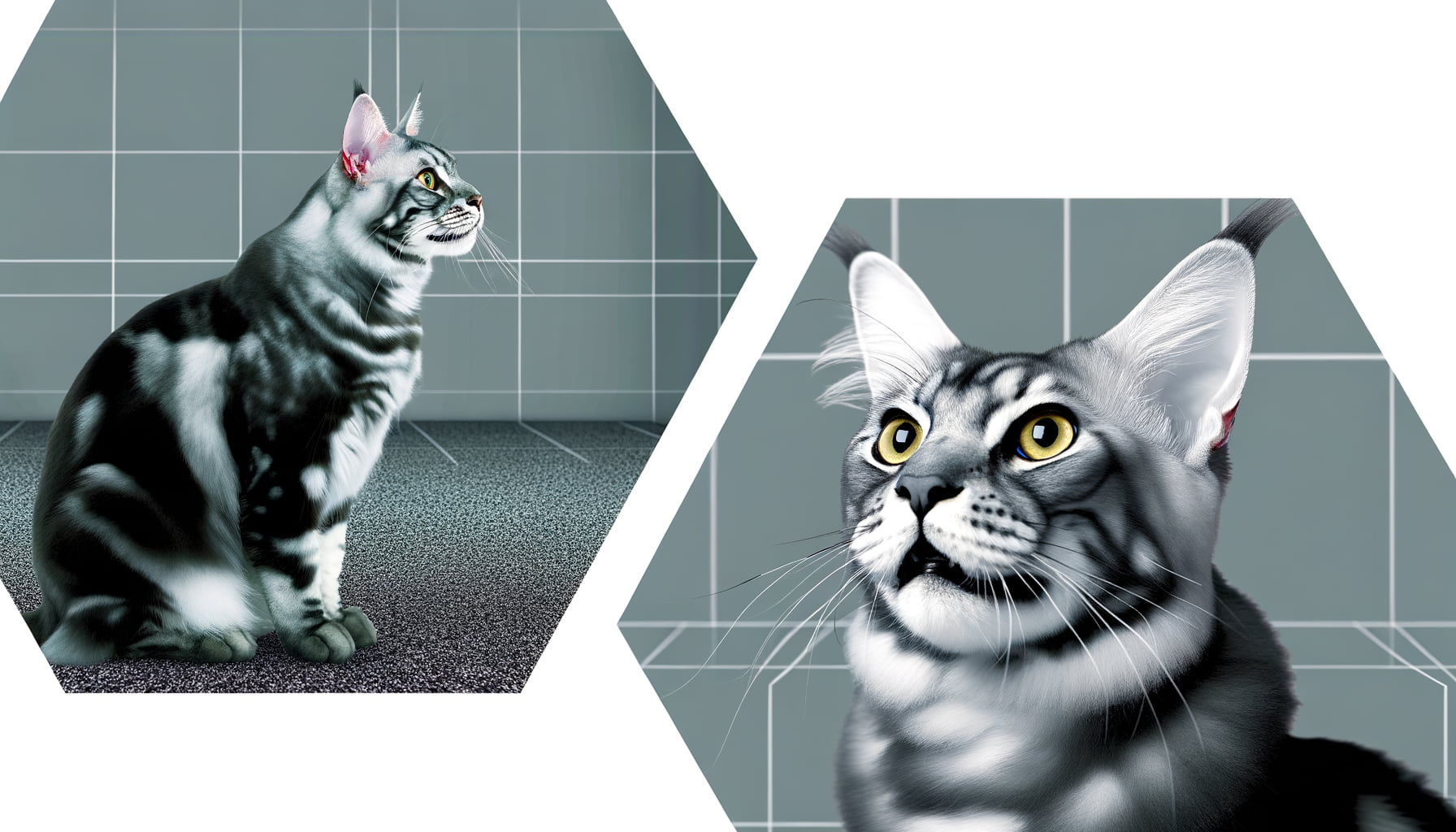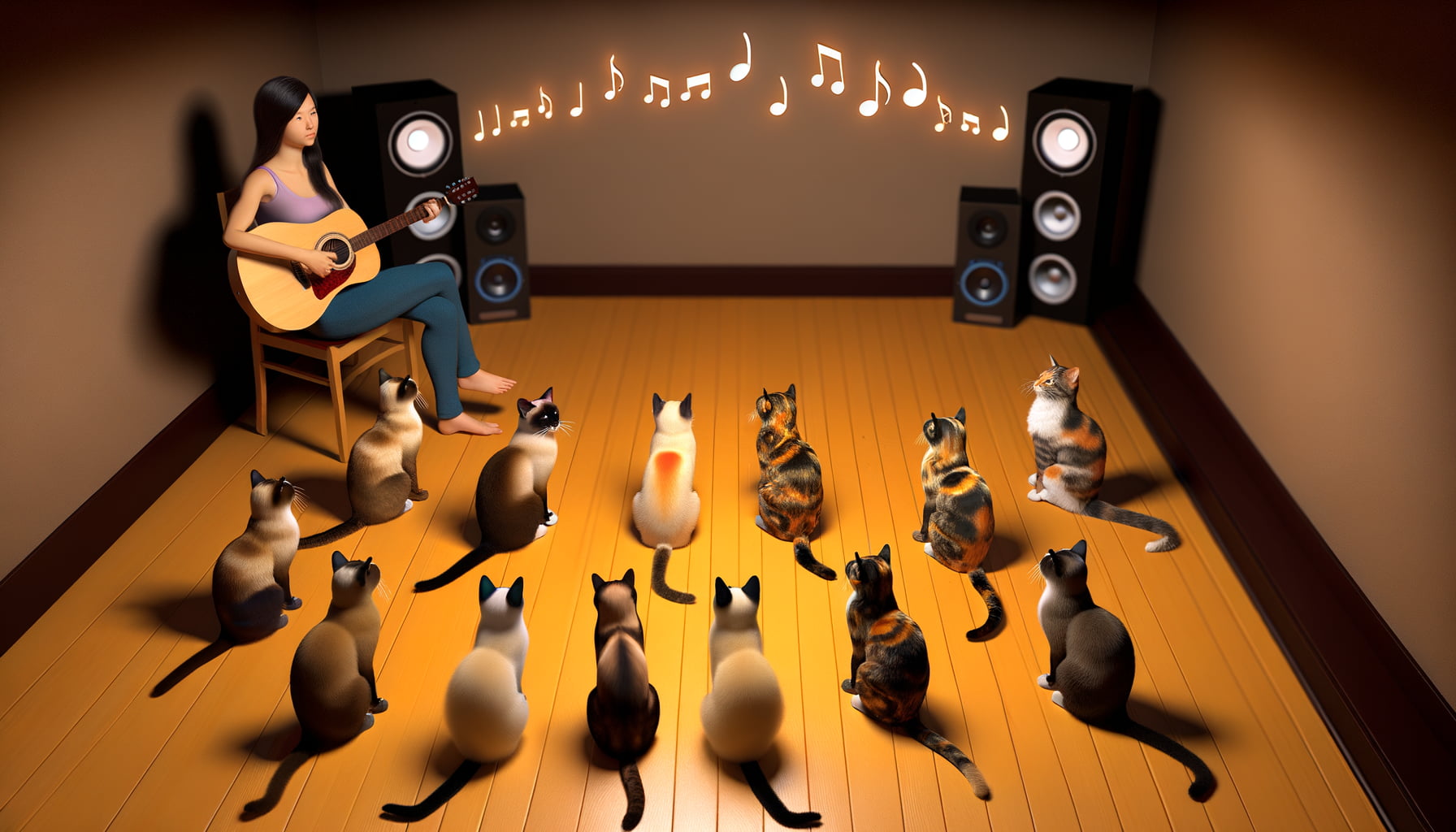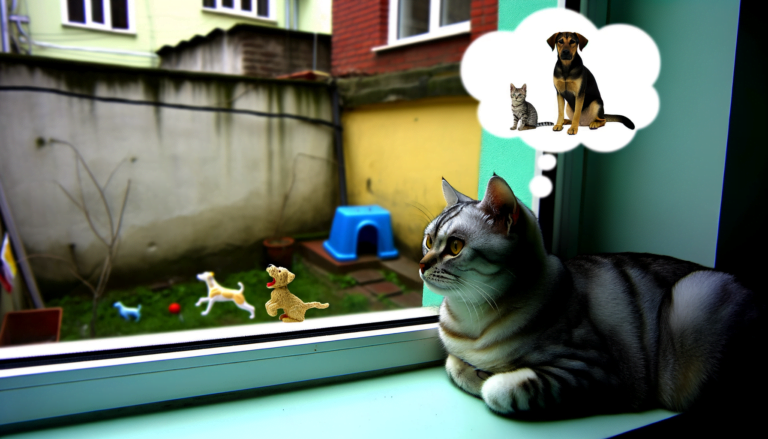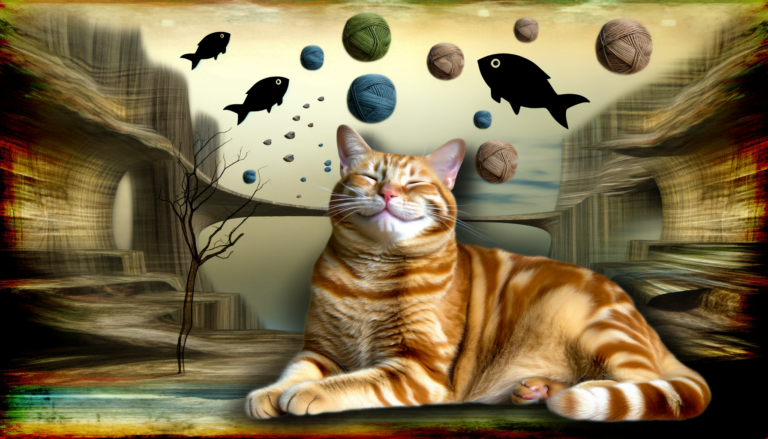Melodies and Meows: Unlocking the Mystery of Cats and Human Singing
Cats do not necessarily enjoy human singing, primarily because our vocal ranges differ significantly. Felines communicate and perceive the world differently compared to us. Their typical response to singing or any other form of music largely depends on the specific tune’s volume and pitch. Some cats might respond neutrally or even positively to calm and soft melodies, while loud or high-pitched songs could cause stress. Nonetheless, every cat is unique, so reactions may vary widely, although the shared language between human and feline is love, affection and respect for their tranquillity.
Tips to Improve Your Singing Interaction with Your Cat

Creating harmonious connections between humans and felines through singing takes an understanding of cats’ auditory preferences. Cats have an extensive hearing range, with a preference for higher pitches, which might explain their draw towards soprano voices. However, it’s crucial not to overwhelm their sensitive ears. Balance in volume and tone is a key factor in keeping your cat attentive rather than fearful.
Furthermore, spontaneous changes in rhythm and scale can create a fascinating soundscape for your feline friend. Varying your singing can reflect the human’s perplexity and burstiness in writing, creating a more engaging experience for your cat. Remember, this activity should be seen as a shared interaction – observing your cat’s responses can signal whether you should modify tempo, pitch, or volume.
Lastly, time spent singing together can also be a bonding experience. Regular interactions of this nature can serve to strengthen your relationship, offering tangible benefits such as increased trust and mutual understanding.
Understanding Cat’s Perception of Human’s Voice

Cats, contrary to common belief, have an excellent perception of the human voice. Many cat owners may have noticed their feline friends responding to their calls. This stems from the cat’s sharp auditory senses that tune into a variety of frequencies, similar to how they would interpret the calls of their own kind.
A cat’s sense of hearing is finely tuned, and it has the potential to notice nuanced differences in sound. This ability enables them to discern the emotional state of humans through the quality of their voice. A variety of factors, including tone, volume, and pitch, can signal emotional states to a cat, influencing their reaction to the human voice.
As such, when a human sings, it forms a unique auditory experience for a cat, much different from regular speech. Singing has diversified elements, including rhythm, melody, and tone, which can captivate a cat’s attention. However, how cats perceive this musical form of human vocalization is still a mystery that requires further unraveling.
Case Analysis: Cats’ Emotional Responses to Human Singing

One interesting case analysis spotlighted a domestic cat’s distinct reaction to its owner’s singing. This particular cat showed emotional responses ranging from curiosity to comfort, indicating a deep bond between human and feline that could be enhanced by the act of singing.
The designated human would sing a variety of songs, and different types resonated in unique ways. Melodious and calm tunes, for instance, resulted in the cat purring or curling up close, indicating a soothing effect. On the other hand, lively or louder songs made the cat more alert, demonstrating a corresponding increase in its activity level.
Undeniably, this case analysis doesn’t speak for every cat worldwide, but it provides fascinating insights into the potential benefits of musical interaction between humans and cats. Moreover, it indicates the need for further nuanced studies into how cats process human-made sounds and how these sounds affect their emotions. These observations reinforce that the beauty of such interaction isn’t merely melodic, but deeply emotional as well.
Study on Cats’ Reactions to Music and Singing

Our exploration of the captivating sensory world of felines sheds light on their interaction with sound, specifically music and human singing. This section brings attention to the observations collated about cats’ responses to melodic elements.
In several settings, it was noted that cats exhibit varying behavior when exposed to music or singing. Unlike humans, their response may not manifest in visible appreciation or displeasure. Instead, changes could be observed in their body language, their vocal responses, and their overall demeanor. For example, they may become more relaxed or display signs of agitation, depending on the type of music or the singing style they are exposed to.
Interestingly, these reactions seem largely impacted by the specific characteristics of the sound in question, such as its pitch or rhythm. Cats, it appears, resonate more with sounds that mimic natural cat communication, or with elements found in the familiar, soothing purr. This intriguing study illuminates the layers of the acoustic world as perceived by cats and offers fresh insights into optimizing our melodic interactions with our feline companions.
Conclusion
Through the exploration of melodies and meows, the connection between cats and human singing has been unveiled in a fascinating way. The harmonious blend of musicality and feline companionship offers a unique insight into the bond shared between humans and their beloved pets. As we continue to unravel the mystery of this dynamic relationship, we are reminded of the profound impact that music and animals can have on our lives.
By delving deeper into the nuances of melodies and meows, we not only gain a greater appreciation for the beauty of sound, but also for the interconnectedness of all living beings. As we embrace the enchanting symphony of cats and human singing, we are invited to join in a chorus of harmony that transcends language and bridges the gap between species. Ultimately, this exploration serves as a reminder of the power of music and the enduring bond between humans and their furry companions.






